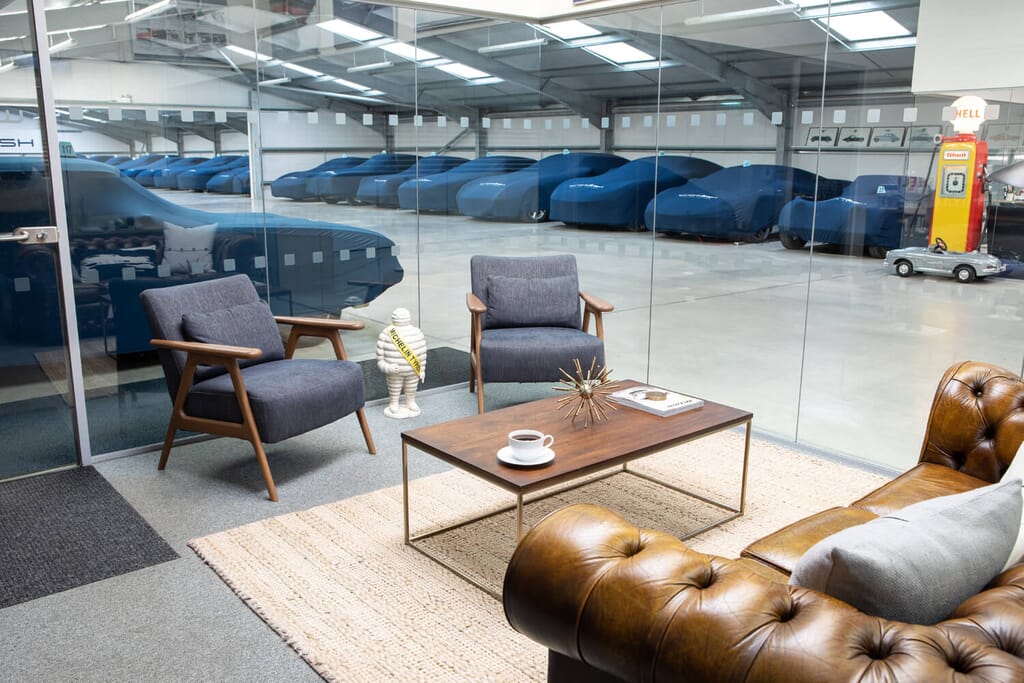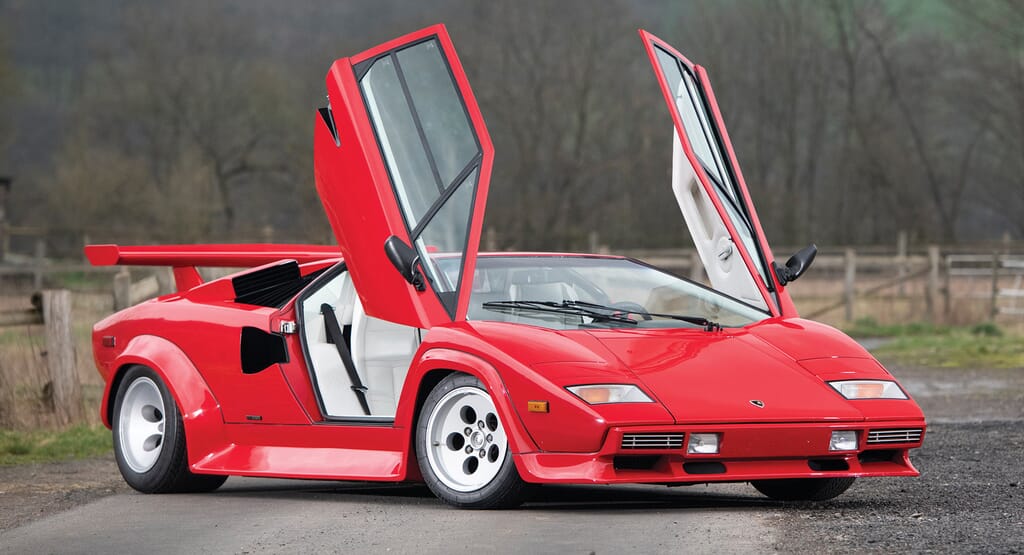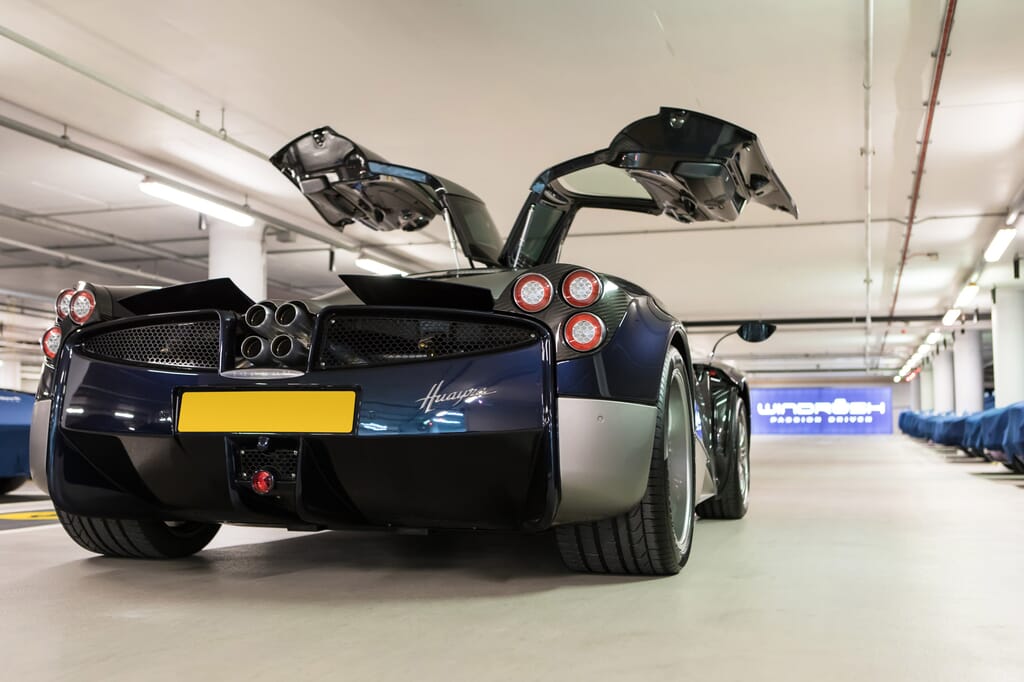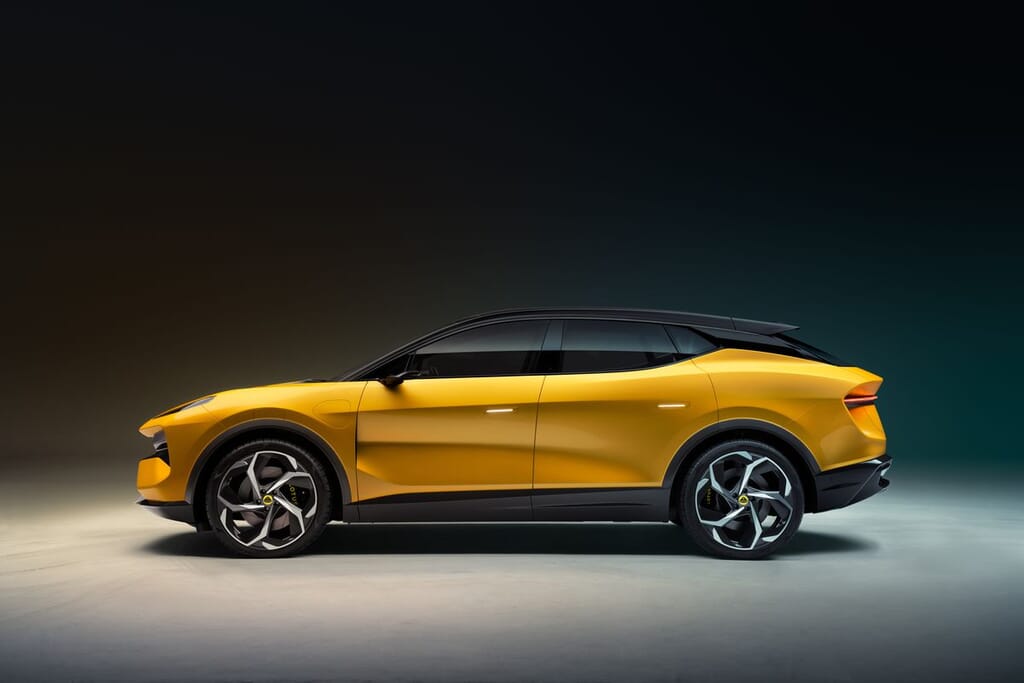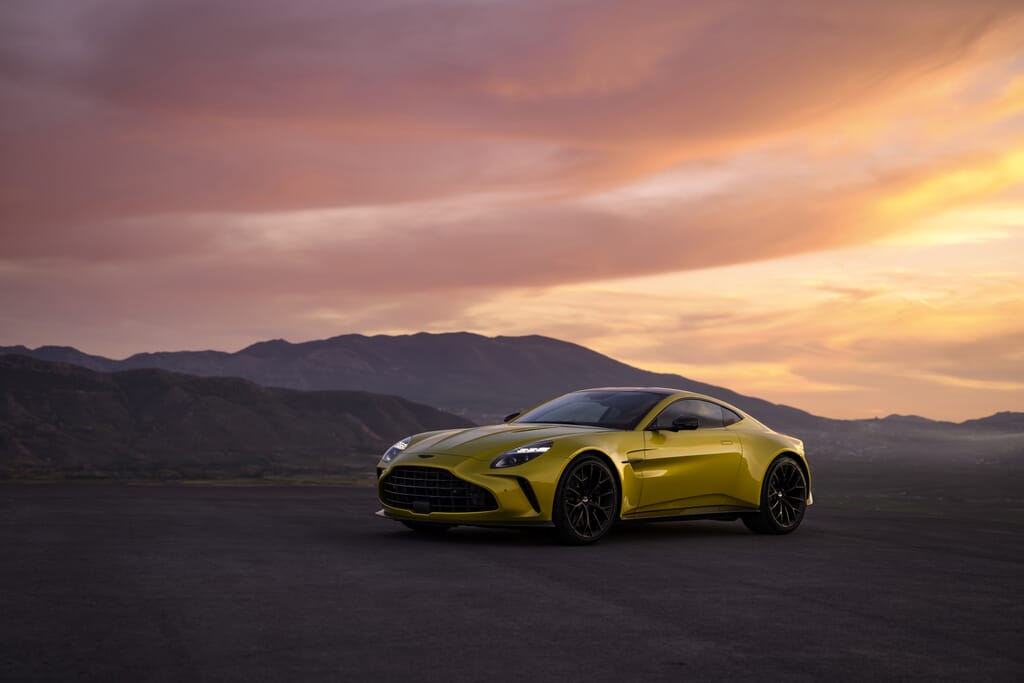
News of a new Aston Martin always gets our attention, especially when it’s a new Vantage. Today Windrush takes a closer look at this new British bruiser.
Aston Martin has used the Vantage nameplate on and off since the 1970s, but it was 2005’s V8 Vantage that really set the tone for the models that have followed since. Now there’s a new one, based heavily on the turbocharged model that arrived in 2018 – but also heavily revised. Glance at the changes Aston has made and it’s been a case of changing what really needed changing and tweaking everything else.
New styling that also improves performance

You could question whether the styling needed changing. The slim headlights and ground-scraping grille of the last car were nothing if not distinctive, and the shape was slowly refined over the years, but Aston’s further nipped and tucked the Vantage to align it more closely with the DB12 that sits above, as well as the old One-77: larger LED headlights, a more conventional grille opening, and subtle revisions to the rear too so both ends neatly match.
The changes aren’t just visual either. The grille is now doing more work to aid cooling (a 38 per cent larger aperture has resulted in 29 per cent more flow) while the splitter beneath it contributes to greater stability at speed (and with a top end of 202mph – more on that in a bit – the more stability the better).
Vents around the exterior have been reprofiled and the wheel arches are actually 30mm wider, filled by 21-inch forged wheels. Colour choice has opened up too, with 21 hues that can be embellished further with ‘livery designs’ that add pinstripe, ‘lipstick’ and rear infill colours, in various combinations.
The Vantage’s most powerful engine yet
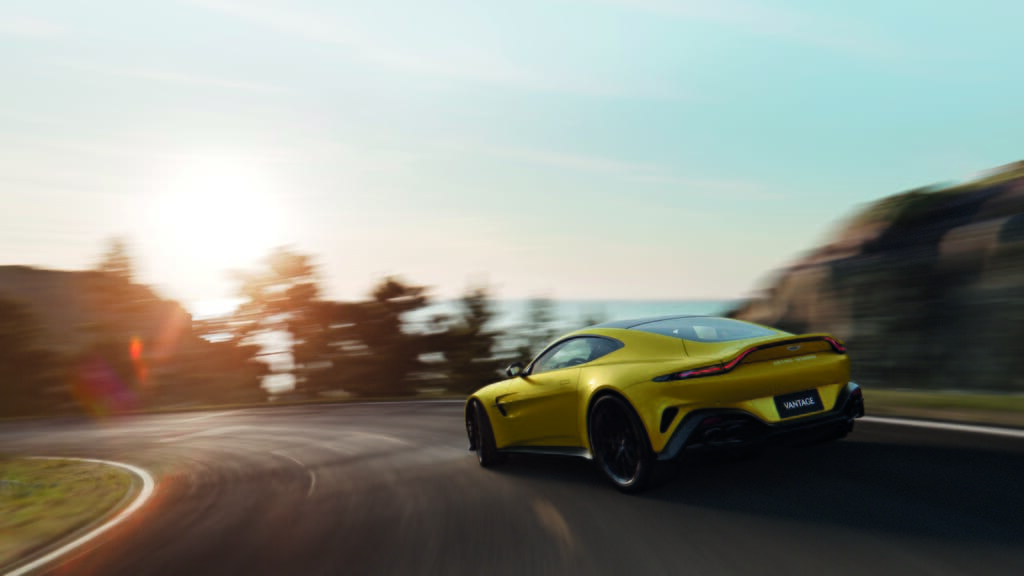
Breaching the 200mph mark has come courtesy of the most powerful V8 to sit in a Vantage yet. The twin turbochargers and 4-litre capacity give the game away that Aston Martin is still using one of AMG’s V8s, but in this state of tune it develops 665PS, a full 155PS more than the car it replaces, or a hefty 30 per cent gain.
Torque’s up too, by 15 per cent to 800Nm, or 590lb ft in old money. Revised cam profiles, compression ratios, better cooling of both radiator and oil, and simply strapping on bigger turbos are the culprits, while a shorter final drive aids acceleration too: 0-60mph is the work of 3.4 seconds, an admittedly smaller gain on the 2018 car’s 3.6. The gearbox is still a ZF eight-speed auto, but engineers have sharpened up the shifts.
Owners can now fiddle with how much slip they want from the rear wheels too, thanks to an eight-stage adjustable traction control, a launch control system, or the ability to turn everything off and turn the tyres into a pair of sticky, smouldering lines on the ground. Both E-diff and ESP systems can also be tweaked via driving modes, which in turn control a set of intelligent adaptive dampers with, Aston says, a “500 per cent increase in bandwidth of force distribution over previous generation hardware”. Translation: more speed and response in all conditions, for sharper and more controlled handling. Aston Martin has worked with Michelin to develop a set of Pilot Sport 5S tyres keyed in to the Vantage’s chassis specifics, and while you get cast iron brakes as standard (a full 400mm in diameter up front), carbon-ceramics are an option and are better than any diet, cutting 27kg from the car’s unsprung mass.
A smart interior with surround sound
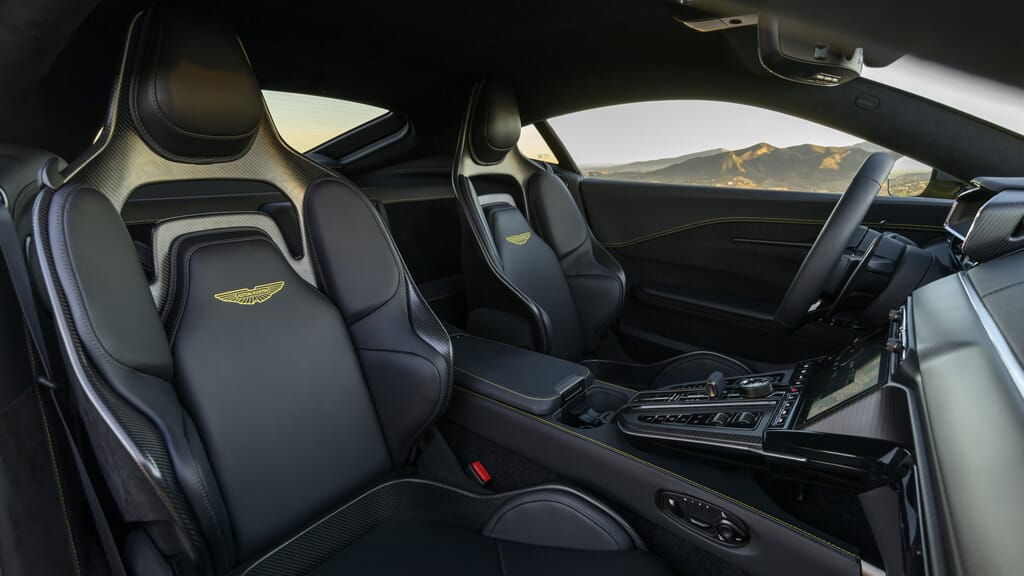
Among those ‘changing what really needed changing’ alterations, the interior’s vastly different now. Gone is the motley assortment of switches and vents, replaced by a cleaner horizontal layout with a flying bridge-style centre console, and a touchscreen that’s now positioned lower – possibly less in your eyeline, but also less like it’s growing out of the dash.
Leather is Bridge of Weir, audio Bowers & Wilkins (15 speakers and 1170 watts), and the infotainment is in-house rather than a hand-me-down Mercedes system, and will happily pair with Android and iOS devices. An accompanying Aston Martin app can be used to remotely monitor and locate your car. Not a problem if you have it housed in Windrush’s secure car storage facility where it will be looked after by our dedicated team 24-7.
A winning track record
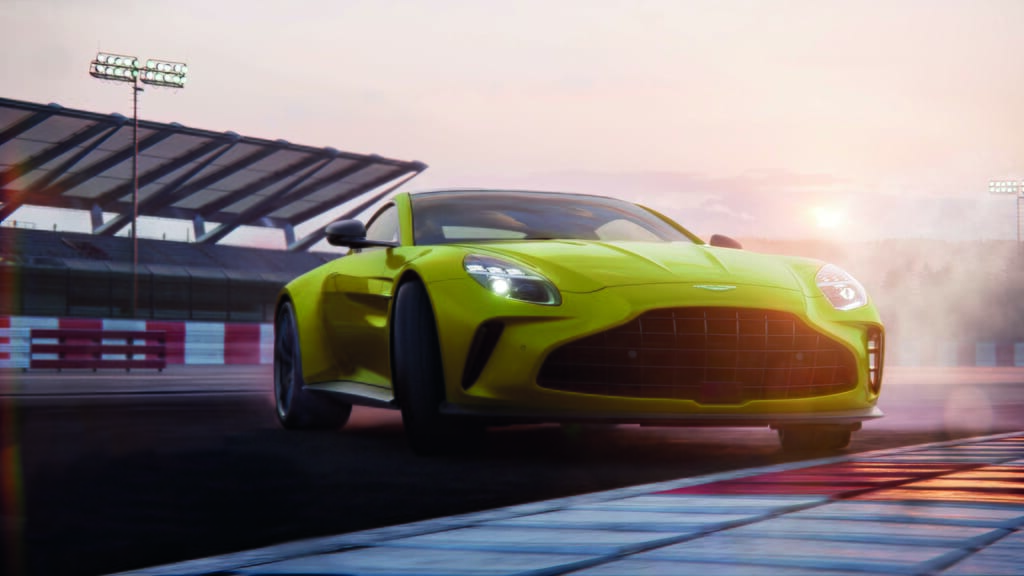
To rub in the significance of the new Vantage, Aston Martin launched the road car alongside the GT3 racer. This is always a bit of a risk as competition cars can make production ones look a little meek, but Aston has a good track record (literally) with its GT3 and GT4 programmes, so knowing the new model has a racing cousin all adds to the appeal.
The company hasn’t revealed pricing yet, but does say deliveries will begin in the second quarter. If you’re a fan of the brand, it surely can’t come too soon.
Luxury car storage for super cars, old and new
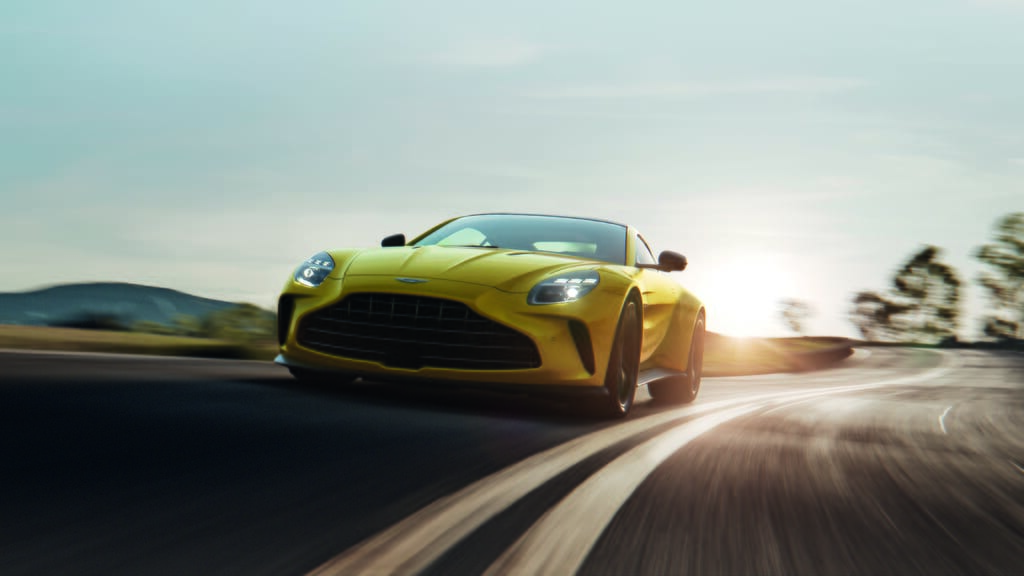
Our services cater to luxury car storage for super cars. Whether you’re expecting delivery of the new Aston Martin Vantage or your classic DB12 is your pride and joy, it makes sense to house your wheels at Windrush Car Storage. At our discreet high-security car storage facilities, we offer an ongoing maintenance programme that will keep any car driving as good as new.
Contact the Windrush team to enquire about our secure car storage in London and the Cotswolds. We’re ready to assist you on info@windrushcarstorage.co.uk
